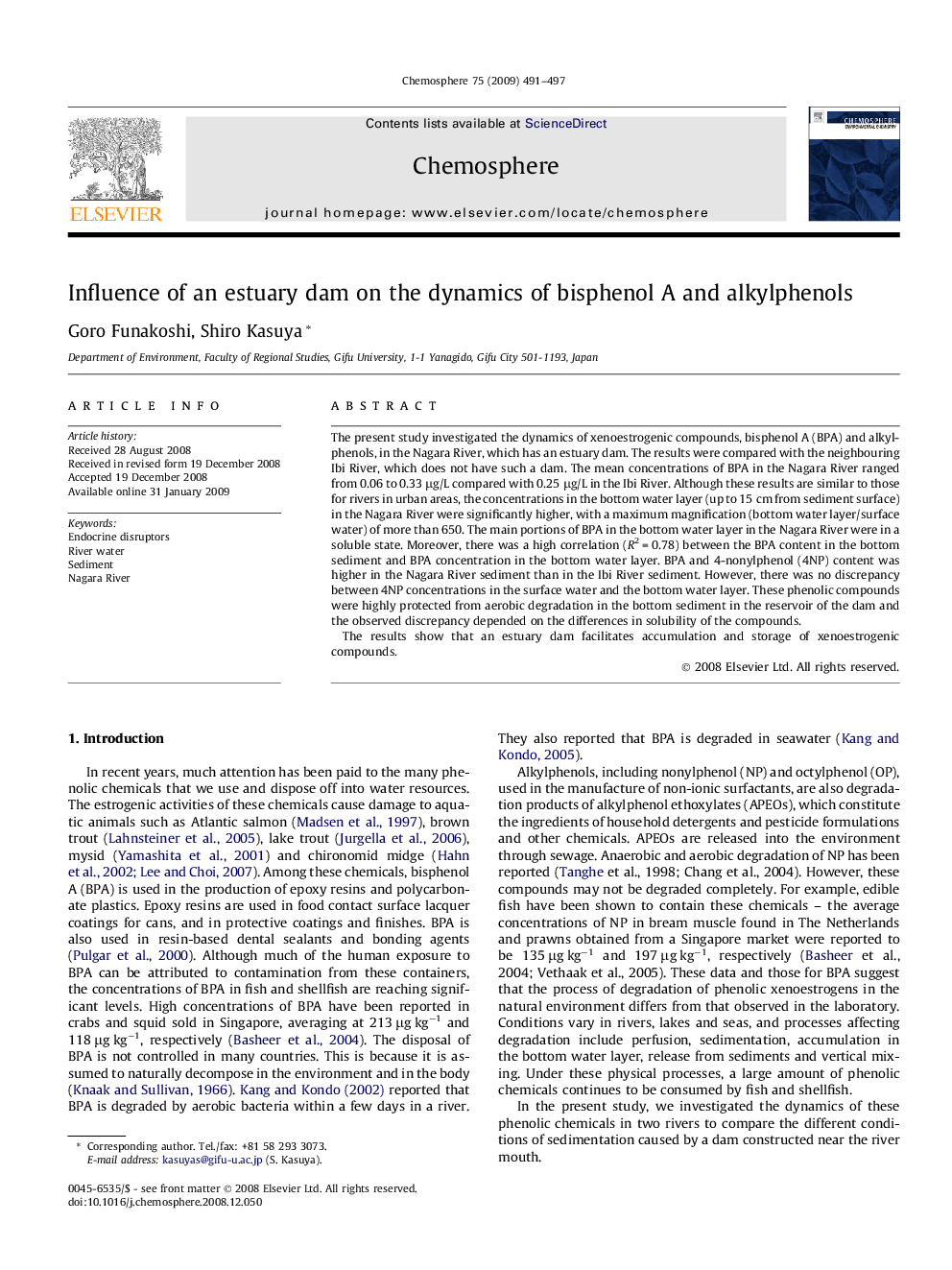| Article ID | Journal | Published Year | Pages | File Type |
|---|---|---|---|---|
| 4413096 | Chemosphere | 2009 | 7 Pages |
The present study investigated the dynamics of xenoestrogenic compounds, bisphenol A (BPA) and alkylphenols, in the Nagara River, which has an estuary dam. The results were compared with the neighbouring Ibi River, which does not have such a dam. The mean concentrations of BPA in the Nagara River ranged from 0.06 to 0.33 μg/L compared with 0.25 μg/L in the Ibi River. Although these results are similar to those for rivers in urban areas, the concentrations in the bottom water layer (up to 15 cm from sediment surface) in the Nagara River were significantly higher, with a maximum magnification (bottom water layer/surface water) of more than 650. The main portions of BPA in the bottom water layer in the Nagara River were in a soluble state. Moreover, there was a high correlation (R2 = 0.78) between the BPA content in the bottom sediment and BPA concentration in the bottom water layer. BPA and 4-nonylphenol (4NP) content was higher in the Nagara River sediment than in the Ibi River sediment. However, there was no discrepancy between 4NP concentrations in the surface water and the bottom water layer. These phenolic compounds were highly protected from aerobic degradation in the bottom sediment in the reservoir of the dam and the observed discrepancy depended on the differences in solubility of the compounds.The results show that an estuary dam facilitates accumulation and storage of xenoestrogenic compounds.
